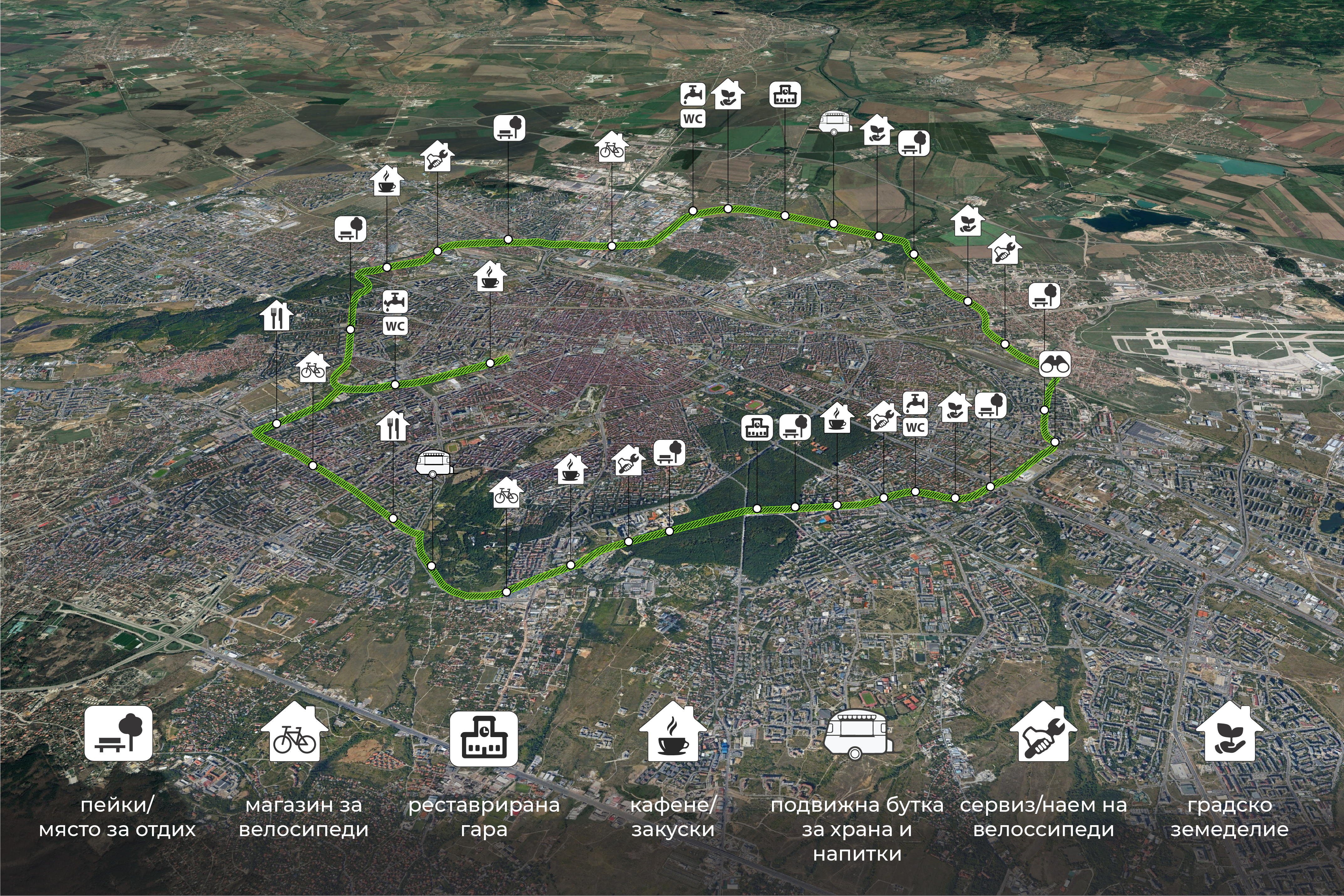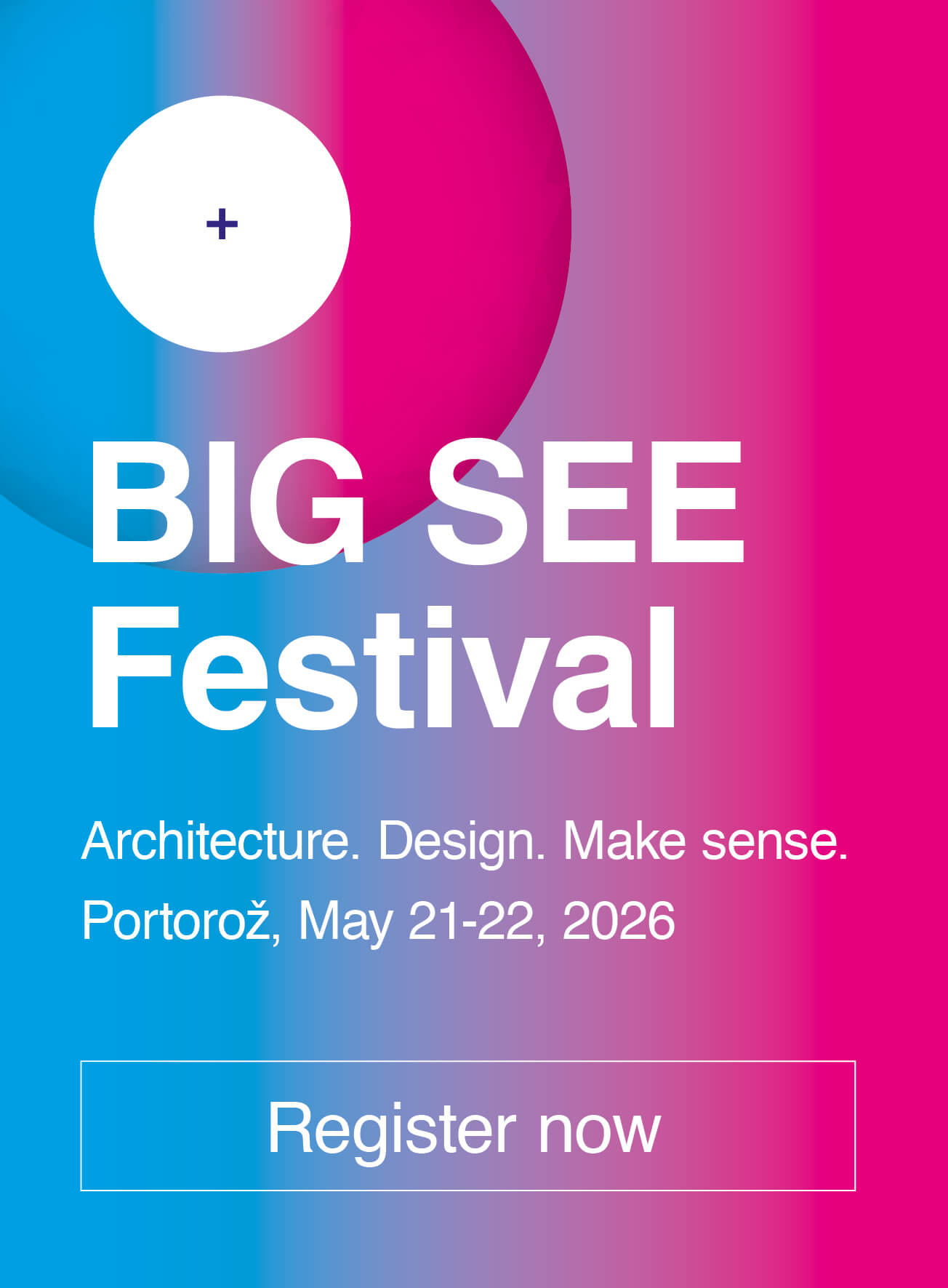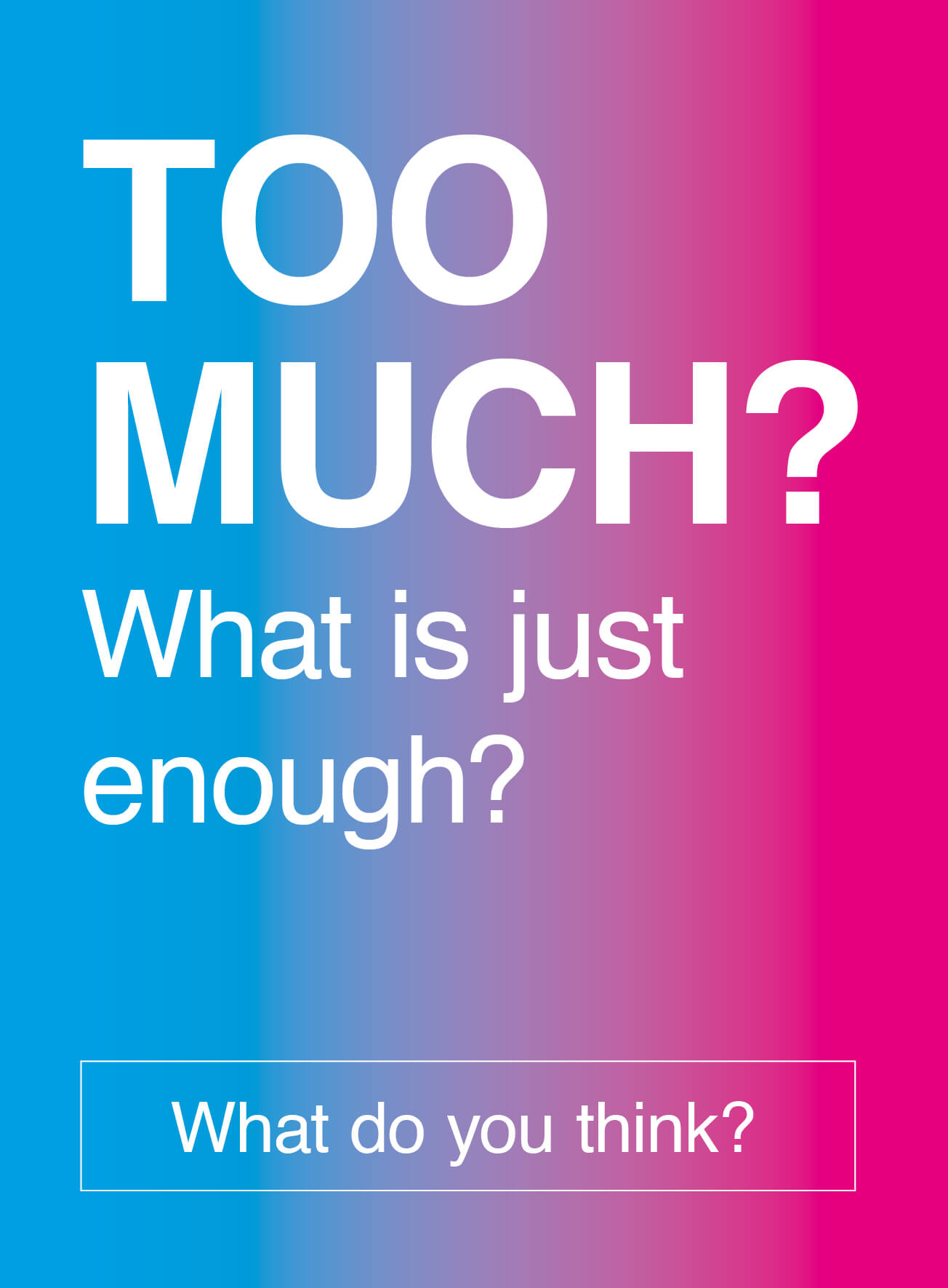An ecological urban public space for the citizens of Sofia
The project
Green Ring Sofia is an approximately 32 km long loop of bidirectional cycling lanes and pedestrian footpaths. It is an initiative for the adaptation of abandoned spaces and unused railways in a new infrastructure to connect the urban environment. The aim is to create a linear park along the old railway routes, unused river banks and the existing and future bicycle and park alleys around the city centre of Sofia. It will form a 32 km green highway that connects the central and peripheral neighbourhoods, large parks and gardens, as well as many cultural and sports sites. The ring will be used for alternative modes of transport, walking, recreation and tourism, as well as a platform for cultural, sports and educational events. The Green Ring will provide unobstructed bicycle and pedestrian access between neighbourhoods through overground and above/underground passages, streets and boulevards. The main goal of the project is to unite people and revive abandoned green spaces and neglected neighbourhoods by creating a public ecological urban space for all of the citizens of Sofia. The new multifunctional and communicative space will stimulate active movement in the city and create a favourable environment for future investments in the currently unattractive areas within the scope of the route.
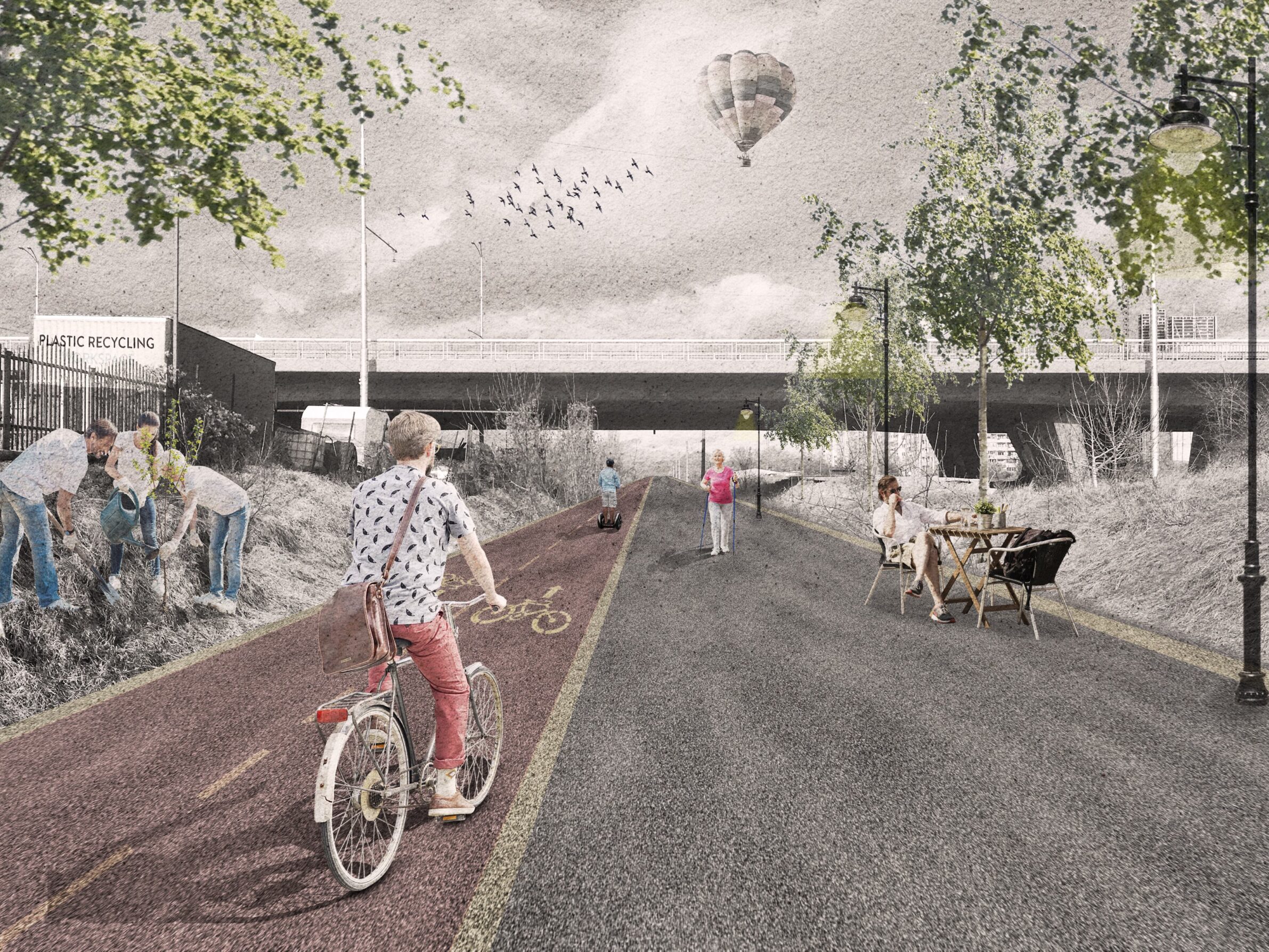
The Green Line Sofia Foundation – the people behind the project
At the heart of the Green Ring Sofia project lies the Green Line Sofia Foundation, a visionary non-governmental organisation led by a trio of creative minds: Svetoslav Alexandrov and Hristiyana Vassileva, both architects, alongside Sofia Stoyanova, a landscape architect.
The inspiration for the project came from the German town of Wuppertal, where Svetoslav Alexandrov and Hristiyana Vassileva studied together and saw how the Nordbahntrasse project developed from an idea created with pen and paper that was then applied to the urban environment. After personally experiencing the success of the Nordbahntrasse the two newly graduated architects knew that the city of Sofia had a lot of unused railway infrastructure that was abandoned shortly after the 1990s, and saw an opportunity for success there. They started to research old maps and do site walks on the unused infrastructure, and discovered an amazing opportunity to connect them in a loop. Soon after, in 2018, they developed the first maps of the Green Ring routes, along with the first drone videos and visualisations (www.greenlinesofia.com).
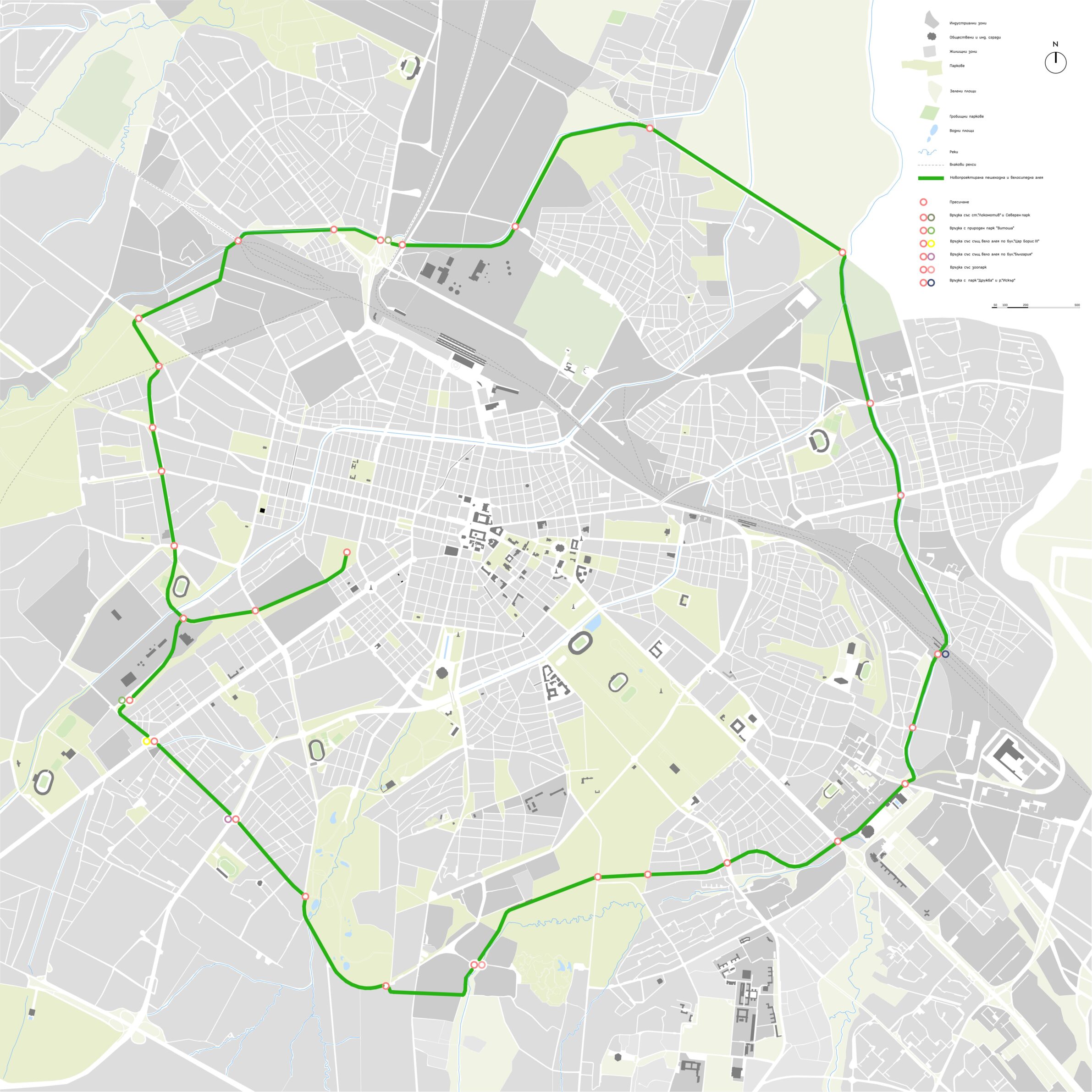
Map of the Green Ring project and its context within the city.
The ring as a new type of urban infrastructure – connectivity, sustainability and ecology
The concept of the Green Ring is built around the main urban challenges facing Sofia today, those of- connectivity, sustainability, and ecology.
Connectivity: The design of the Green Ring addresses the fragmentation of Sofia’s cityscape, where an outdated railway infrastructures led to social segregation, particularly in the northern neighbourhoods, and disrupted pedestrian and cycling routes. The Ring introduces a seamless 32 km loop that unites the city with a consistent and recognisable identity. This infrastructure is designed to enhance mobility for cyclists and pedestrians, fostering greater social cohesion and integration across diverse communities.
Sustainability: The project transforms neglected urban areas — including deteriorating green spaces, obsolete railway tracks, and riverbanks — into vibrant, sustainable hubs. These areas are set to be repurposed into dynamic public spaces which encourage walking and cycling. Moreover, the Green Ring will revitalise old industrial buildings, heritage sites, and stadiums, repurposing them into new cultural, educational, and recreational facilities such as libraries, art galleries, and sports centres. This aspect of the project not only rejuvenates underused city fabric, but also helps preserve Sofia’s rich historical narrative.
Ecology: At the heart of the Green Ring’s design is a commitment to expanding green spaces and enhancing urban ecology, crucial for combating air pollution and increasing the city’s liveability. The project creates a safe, car-free environment that promotes healthier, eco-friendly transportation alternatives. Additionally, it includes significant ecological restoration, particularly of riverbanks, to enhance biodiversity and restore natural habitats that have long been neglected.
Together, these elements work in harmony to transform Sofia into a model city that prioritises the well-being of its residents and the health of its environment, setting a new standard for urban development in the 21st century.
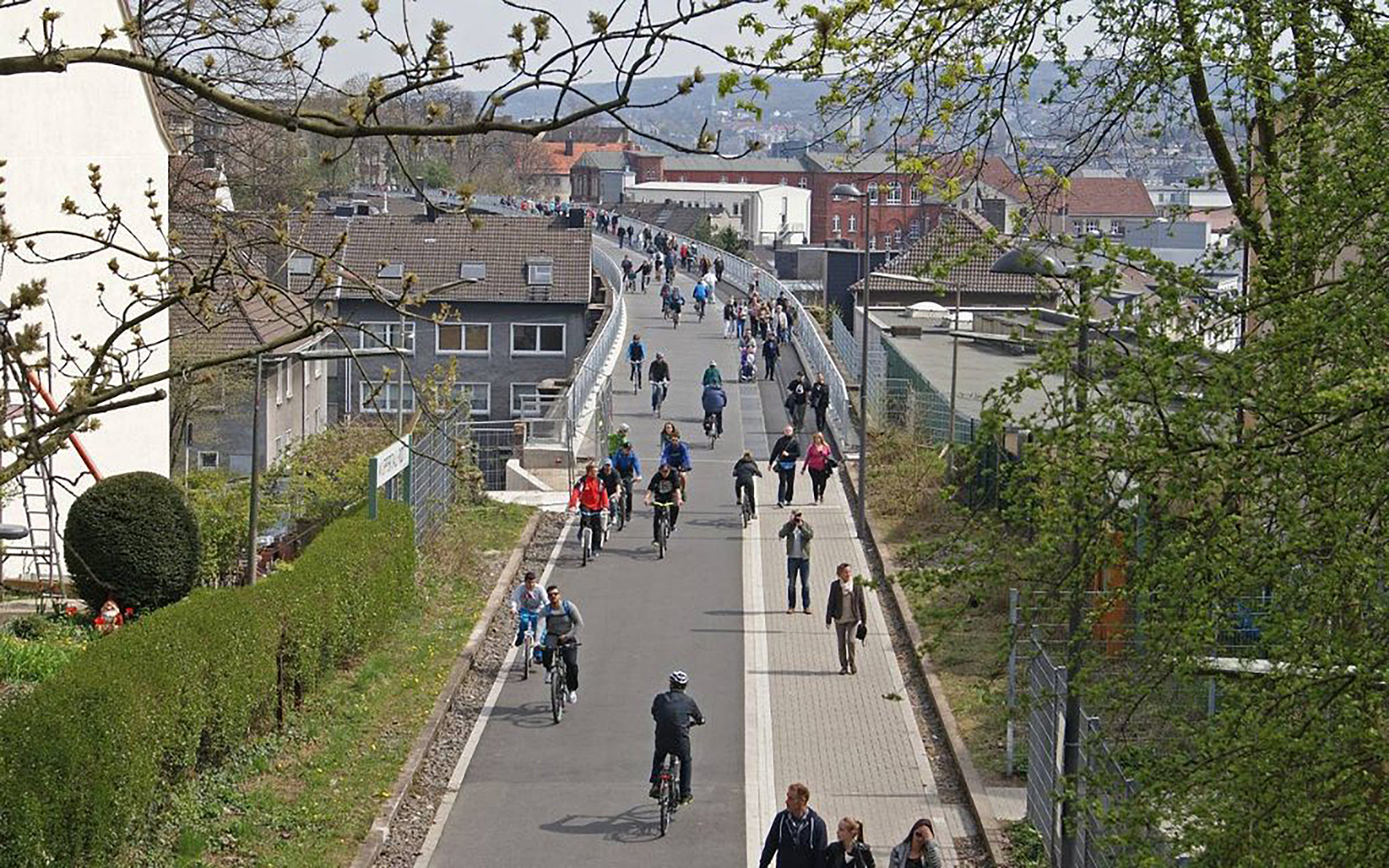
The Nordbahntrasse project, which transformed a 22 km long former railway track into a cycle and pedestrian path in Wuppertal, 2014.
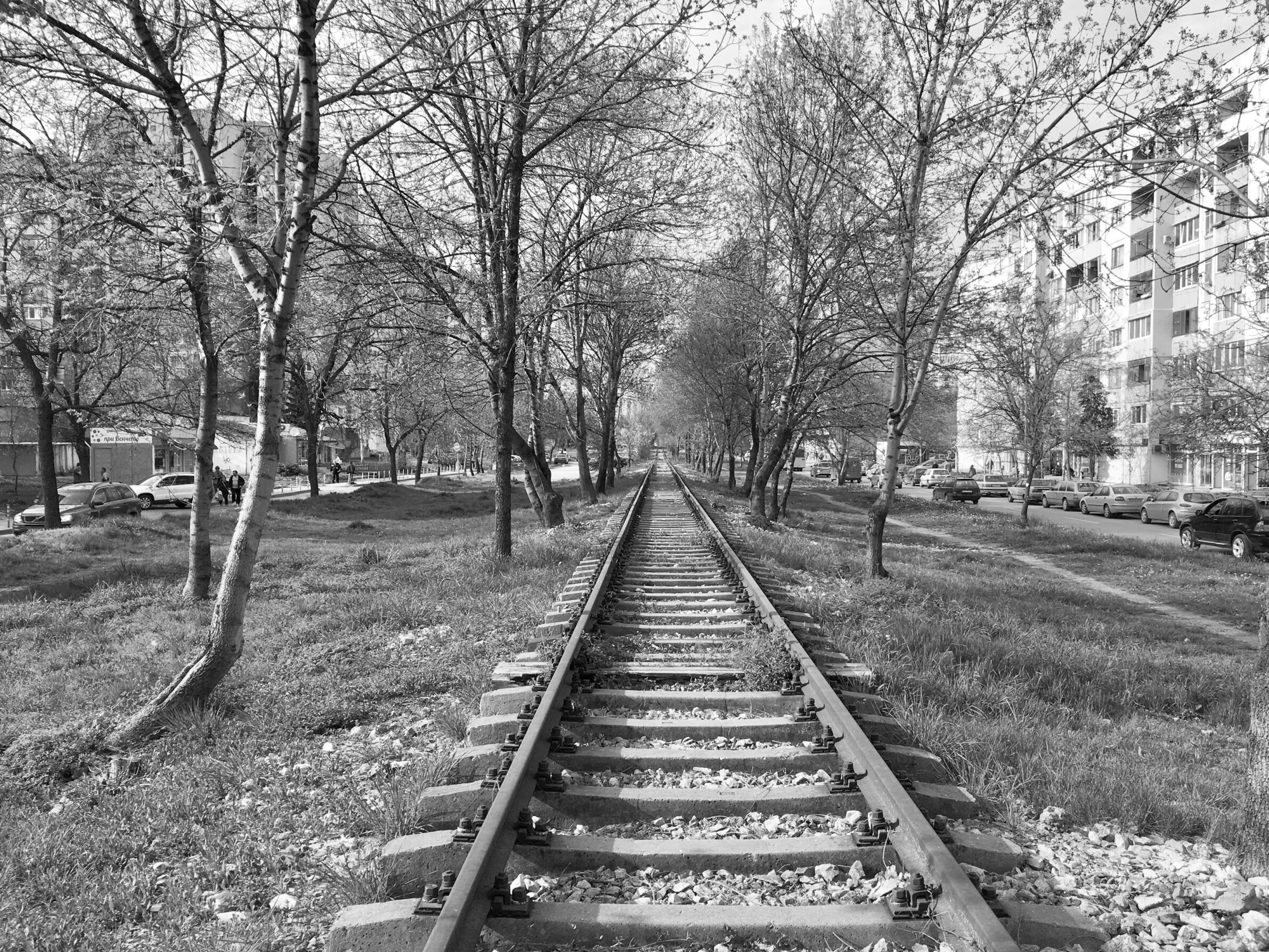
On site picture of the former railway.
Facts about the Green Ring
The 32 km loop connects 30 neighbourhoods and three of the biggest parks in the city of Sofia. Analysis shows that some 250,000 people will have pedestrian and cycling access to the newly developed park, which means that a quarter of the population of Sofia will be able to use it on a daily basis. The ring is the first fast infrastructure to connect the highly dense south and undeveloped north neighbourhoods. In terms of construction permits, 82% of the land is government property and just 12% is private property. This makes it easier for the municipality of Sofia to approve and finance the building of the project. The ring will be the longest cycling infrastructure built in Sofia, and will act as the backbone for all types of new cycling infrastructure in the future. The ring will give the opportunity for the first cycling bridge in Sofia, one built above railroad infrastructure, and for the first underpasses that are designed especially to prioritise cyclists.
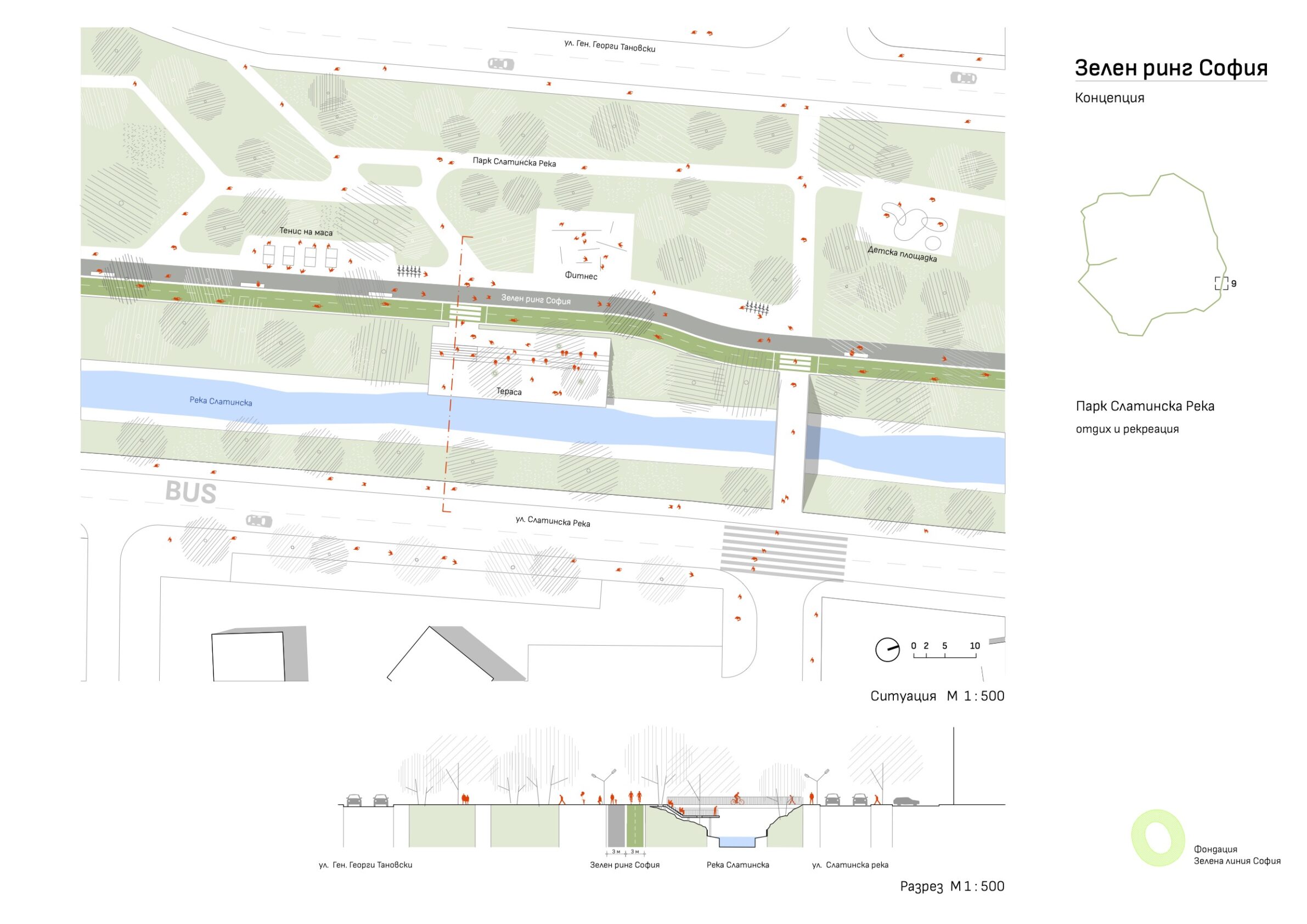
Detailed plans for the Green Ring.
The future of the project
The ring will be the first project that will put in use the new urban practices in Europe such as riverbank restorations for biodiversity. Once it is built, people can use it to enjoy an alternative form of transportation, leisure, recreation and tourism, and it will also be used for all types of public, cultural, sport and educational events.
The project analysis stage is now completed, along with concept designs for the different sections following construction. The first stage of the project is awaiting construction permits for a 4 km strip, which runs 3 km along an old railway line and 1 km along a riverbank. The building of the Green Ring will be one of the most comprehensive projects for urban regeneration ever undertaken in the city. We hope that the project will put Sofia on Europe’s map as a green capital, one that prioritises its citizens and is building a better urban environment for future generations.
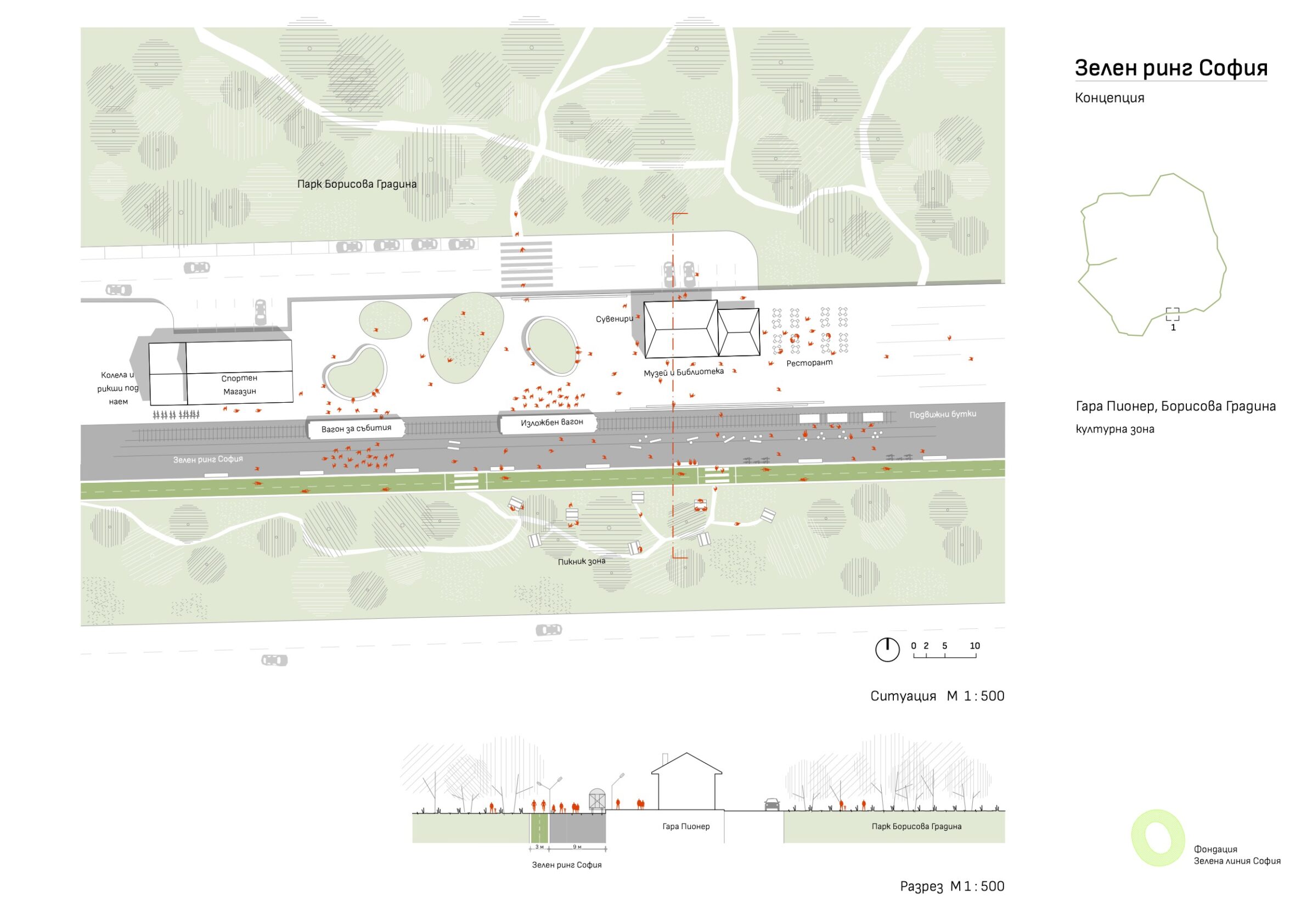
Detailed plans for the Green Ring.
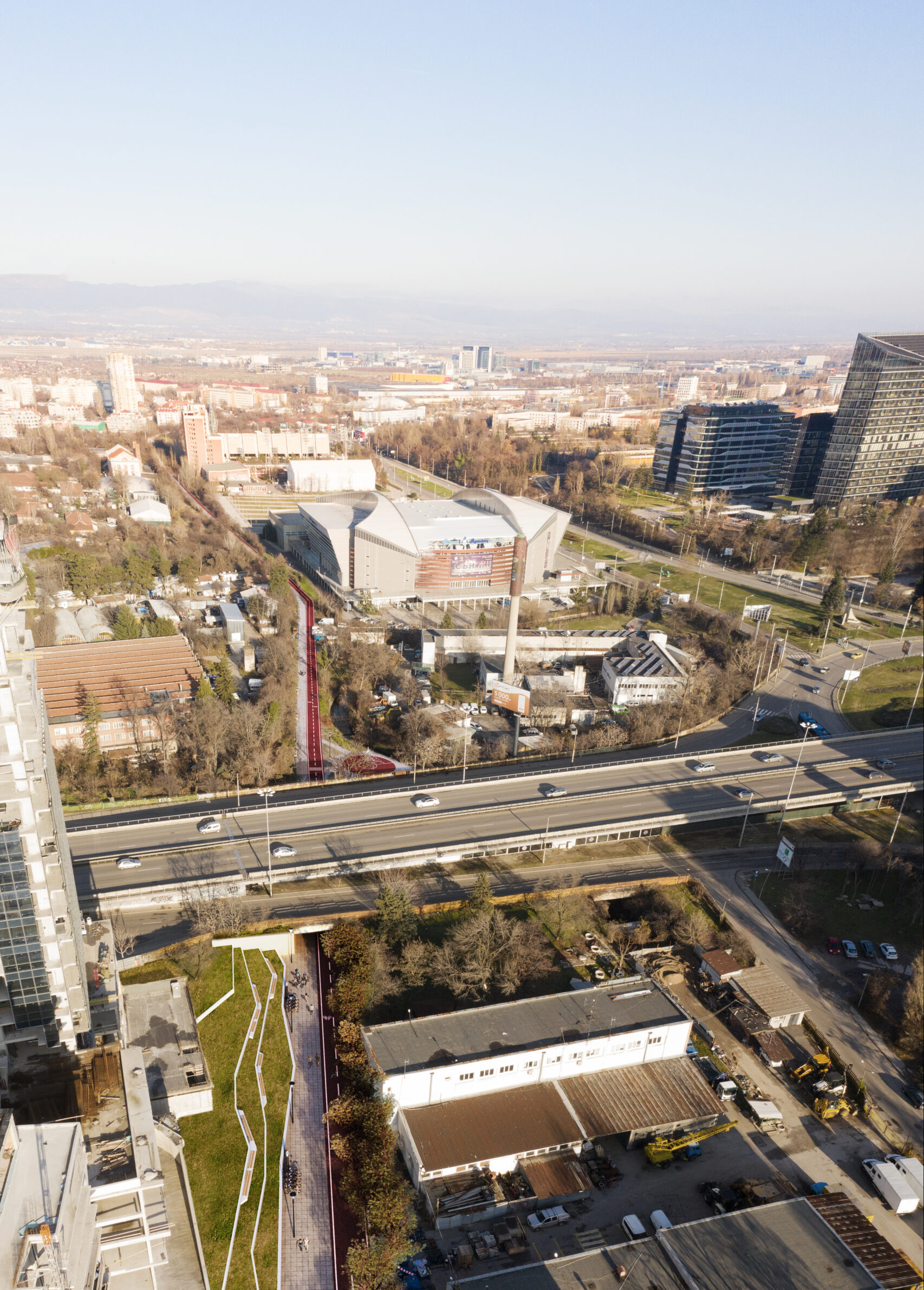
Visualisation: Cosmocube Ltd
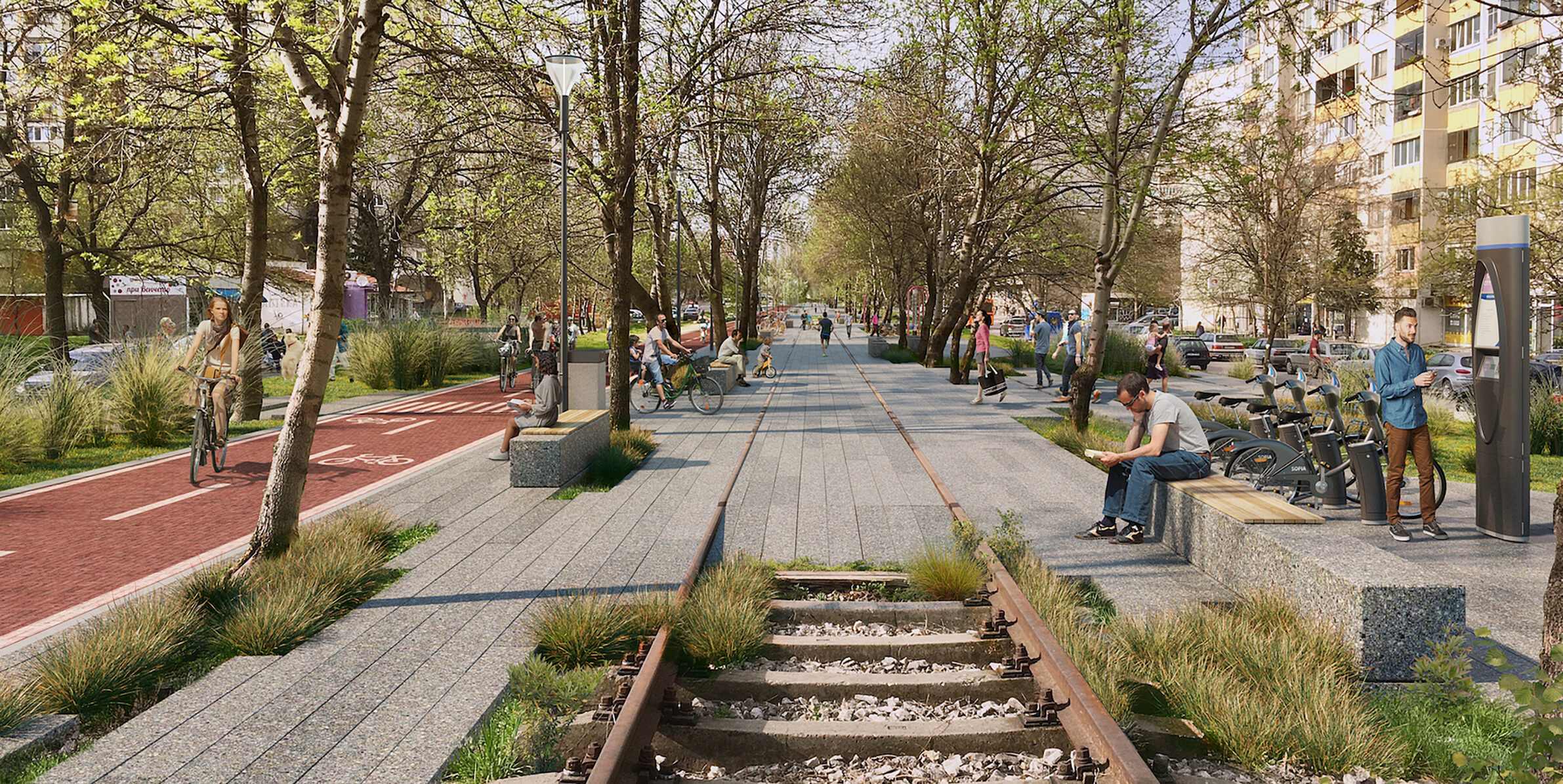
Visualisation: Cosmocube Ltd
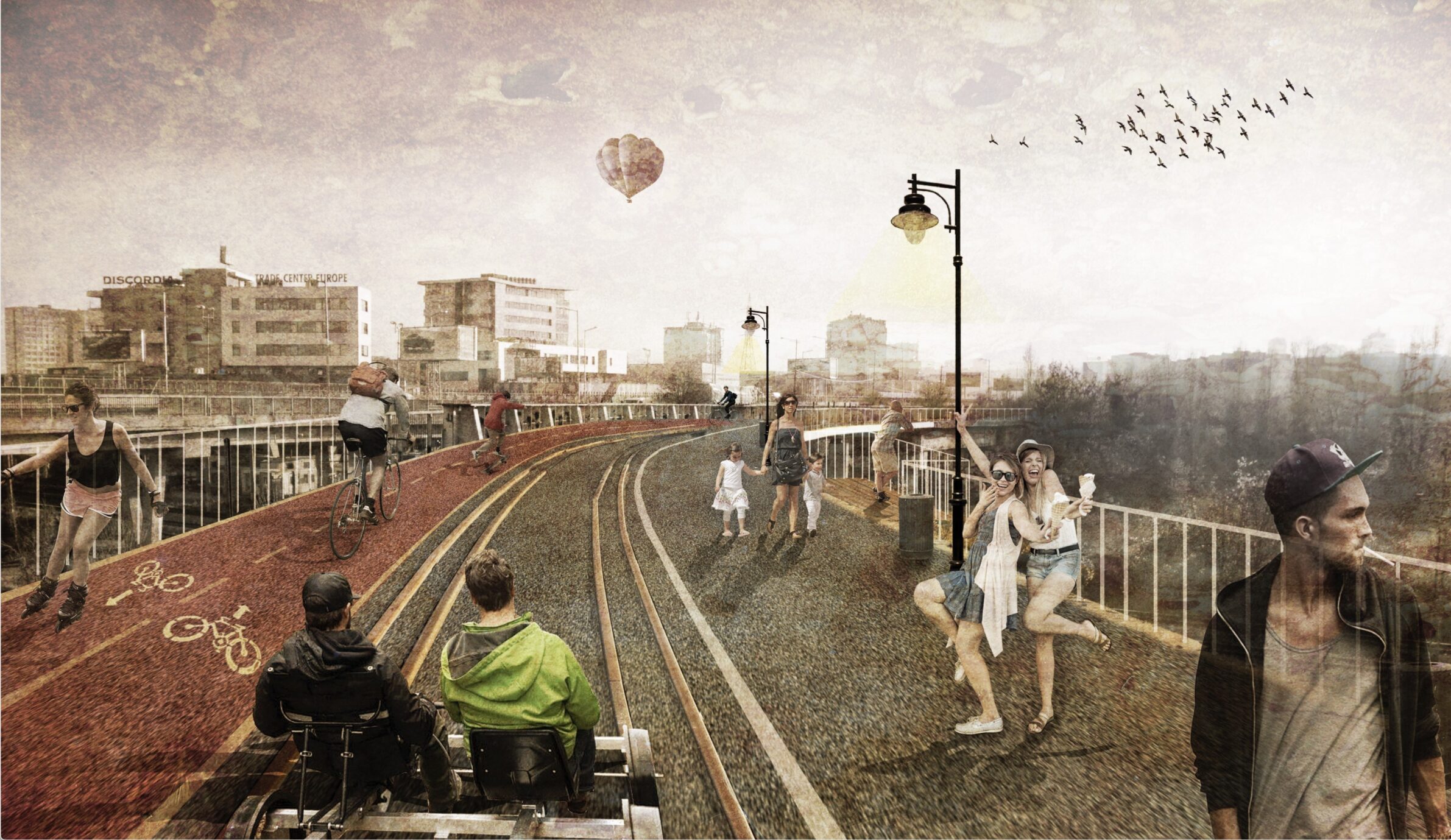
Visualisation: Cosmocube Ltd
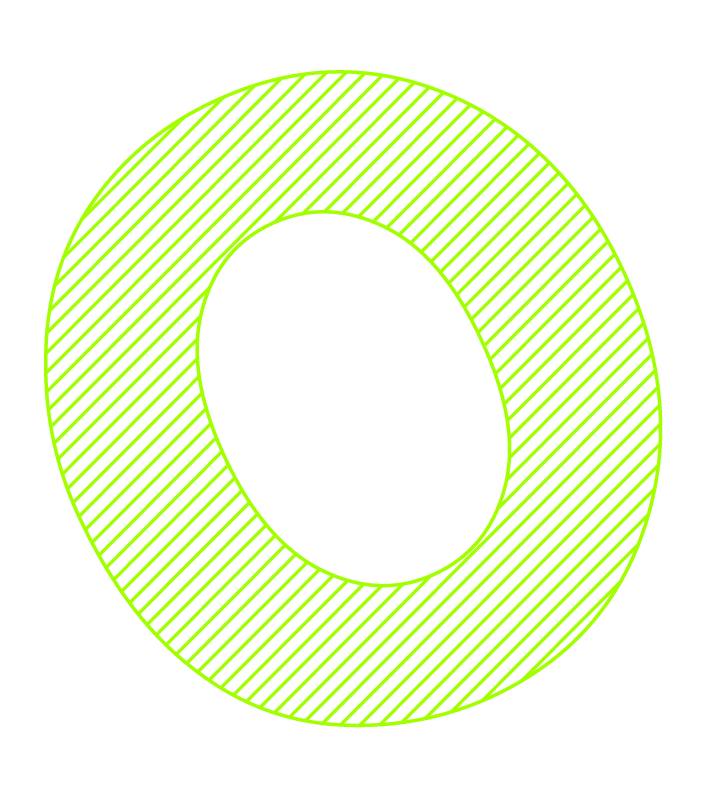
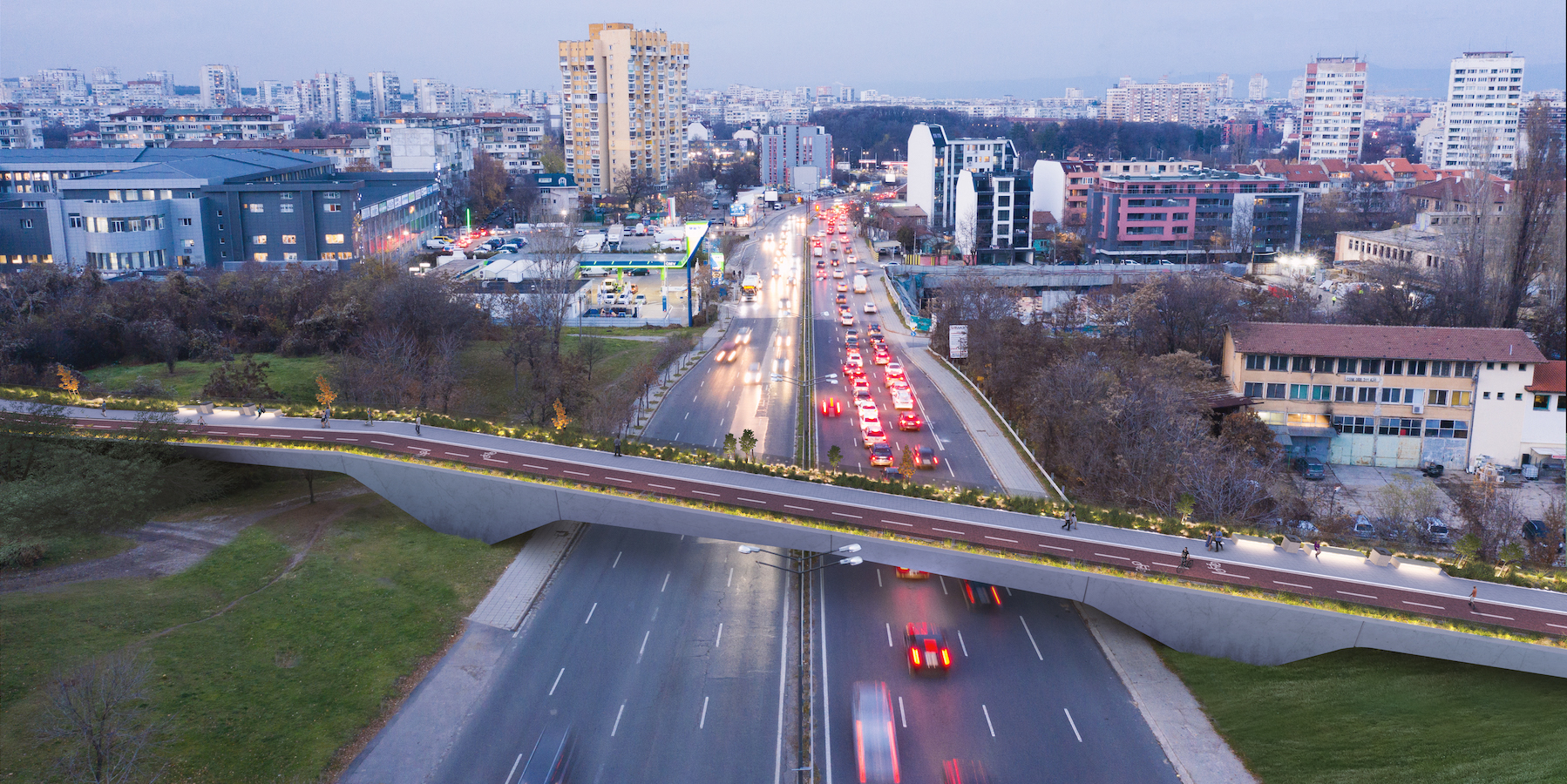
Text: Svetoslav Alexandrov, Hristiyana Vassileva, Sofia Stoyanova; Foundation ‘Green Line Sofia’
Photographs: Green Ring Sofia’s archive, Visualisations: Cosmocube Ltd


